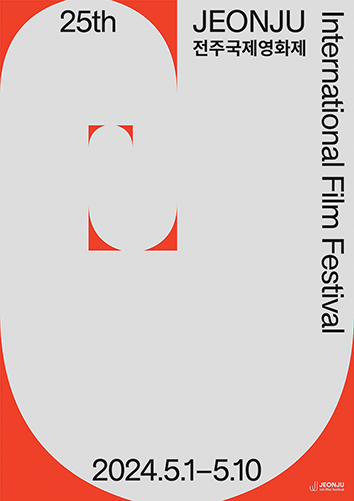The Fastest Way to English Conversation
Written by Dr. David E. Shaffer
WARNING: This article’s title may have more appeal than the content that follows. But it is the credible information contained herein that may be most helpful in snuffing out the myths of language learning and replacing them with a more effective understanding.
I was recently asked to be part of a poster session at the Gwangju-Jeonnam KOTESOL conference. The conference theme was related to assessing how well we are doing at arriving at our goals in language teaching and learning. We thought that a poster session showing how far we have come would help one form an answer to the conference theme: “Are We There Yet?” The plan was to exhibit several examples of teaching materials, conference books, and teacher development materials from each of the past four decades. In selecting items for the exhibit, I came across a tattered and well-used copy of a coursebook that I used with freshman English majors back in the 1970s here in Gwangju. Its title was The Fastest Way to English Conversation.
The Coursebook
The title suggests that, apart from the slow language learning methods of the times, there is a much better, much faster, more efficient way to learn English. The existence of a silver language-learning bullet, a magical method, a miracle drug for learning, however, is but a fantasy that many language learners have clung to. This 1970s North American coursebook title caters to that myth. And the myth persists. A quick internet search produced these English course enticements: “How to learn English in 3 months,” “Fluent in 3 months,” “Learn English in 3 hours”! Alluring, yep; reality, nope. What is real, however, is that outdated methods that impede and protract the language learning process are still used and taught in Korea. This frustration fosters the futile search for a secret solution to language learning.
So why did I use The Fastest Way? The book centered on several characters from cover to cover (Eva and Peter, and Mr. and Mrs. Baker). This created student interest in their lives and their likes. In addition, rather than present a two-person dialogue for the learner to repeat and memorize, it presented questions to a short, situational text for which the learner was expected to create and produce an oral response – a concept considered quite innovative back in the day. But it was no miracle method: While the format may have piqued student interest and fostered creative oral production, sustained practice was still required.

Practice
Practice remains a major requisite for language learning today, and will be tomorrow. In his book Outliers, Malcolm Gladwell posited the 10,000-Hour Rule: that it takes 10,000 hours of deliberate practice in any skill to become an expert in that skill. Though the global nature of the rule has been challenged, it still holds that many hours of practice are necessary to master a foreign language. The classroom methods that the teacher selects and the out-of-class techniques that the student chooses for language study and practice will determine the number of hours that it takes to reach a certain level of proficiency – the more efficient the method, the fewer the hours it will take.
Effective Methods
In Korea, students spend far too much of their English study time memorizing grammar rules and vocabulary as well as prepping for discrete-item English tests (e.g., multiple-choice questions). To learn to play baseball, you need to practice rather than memorize the game rules and take a test on them. The same is true of learning a language: You need to practice the four skills of reading, writing, speaking, and listening to learn them. So, what are some effective practice methods?
Reading. Much about a language can be learned through reading, especially through extensive reading. This is pleasure reading on topics that interest the reader and of material that is at the reader’s proficiency level. Through enjoyable, almost effortless reading in a meaningful context, grammatical structures and vocabulary will be painlessly learned without the need for memorization.
Listening. Along with reading, the other receptive skill is listening. If one is learning English in an English-speaking community, receiving enough listening input is not difficult. But in an environment such as Korea, one must seek out English speakers and listen to English movies, TV, radio, and material on the internet to get the required massive dose of input. As with reading, listening to material at one’s proficiency level, or just slightly above, aids greatly in the acquisition of grammar and vocabulary. And it also benefits pronunciation considerably.
Speaking. While the stereotypical image of a Korean learner of English is of a sweating student pouring over English textbooks, the applied linguist Stephen Krashen has long claimed that being in an English-speaking environment is all that is necessary to learn a second language. Interaction in the language is considered paramount. Speaking is a productive (creating) skill; pouring over books does not give one the creative practice in putting language together to convey meaningful messages. The learner must actively seek out opportunities to carry on meaningful interactions in English – and many of them.
Writing. The second productive skill is writing. For the longest time, I did very little writing in Korean (though the Korean alphabet is easy to master). Then, I was put in a situation where I needed to communicate via email with a layout designer who did not know English. I found that my writing quickly improved through the practice that I was getting through this email writing. The advantage that writing has over speaking is that, while both are productive skills, writing affords one the time to contemplate on the best word to select, the best structure to construct, and the best order to present one’s ideas in. Writing, too, is great language learning practice; every language learner should do some, even to oneself, daily.
In learning English, or any language for that matter, practice is critical, and lots of it. One cannot become fluent in a foreign language in three months (just think how long it took you to learn your first language). The fastest way to learning a language is not fast; it takes years of practice. But the time that it takes becomes faster when the teacher chooses effective teaching methods and the student selects effective methods of practice.
Reference
Gladwell, M. (2008). Outliers: The story of success. New York, NY: Little, Brown, & Co.
The Author
David Shaffer is vice-president of the Gwangju-Jeonnam Chapter of Korea TESOL (KOTESOL). On behalf of the chapter, he invites you to participate in the teacher development workshops at their monthly meetings (always on a Saturday). For many years, Dr. Shaffer has been a professor of English Language at Chosun University. He is a long-time member of KOTESOL and a holder of various KOTESOL positions; he is presently national president. Dr. Shaffer credits KOTESOL for much of his professional development in English language teaching, scholarship, and leadership. He encourages you to get involved. He is board chair at the GIC and also editor-in-chief of the Gwangju News.








